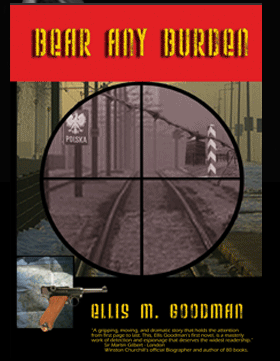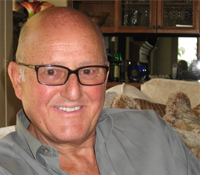


The Espionage Scandal of The Century (part 1)
I’ve always been intrigued by mystery and espionage stories. Books of that genre have always had a tremendous appeal to me, so much so that I recently completed writing my own espionage novel.
Sometimes however, fact can be stranger than fiction. Perhaps none more so than the British espionage scandal involving the “Cambridge Five.” These were five British former Cambridge University students, who were recruited as Soviet agents, passing information to the Soviet Union during World War II, and for six or seven years thereafter.
As with many university students during the 1930s, they were appalled by the rise of Fascism in Germany, culminating in the establishment of the Nazi regime and the civil war in Spain. To many at that time, Communism was an appealing alternative. The participants in this espionage ring were Guy Burgess, Donald Maclean, Kim Philby, Anthony Blunt, and John Cairncross. All were well educated, intelligent young men from wealthy families. There may well have been other participants who were never identified. They mystery continued for decades, and although the scandal was gradually revealed, there are to this day many unanswered questions. The inspiration for many novels, essays and papers.
Whether they were recruited for their espionage roles during their time at Cambridge or after they had graduated, is a matter of conjecture. But it certainly appears that they were actively engaged in spying for the Soviet Union and passing Soviet Disinformation to the Nazis during World War II.
To this day, it is not known how these committed Communists were recruited. It was discovered that Anthony Blunt was an active recruiter for the Soviet Union, but in all likelihood, was not the driving force to recruit the other members of the “Cambridge Five.” What was so unusual about the espionage activities of the Cambridge Five was that they all held high level UK government posts. Some years later after passing along valuable US atomic secrets to the Soviet Union, three of the spies, Kim Philby, Guy Burgess, and Donald Maclean defected to the Soviet Union in order to escape prosecution. It wasn’t until 1979 that the then Prime Minister, Margaret Thatcher, confirmed to the British House of Commons that Anthony Blunt had confessed to being a Soviet spy fifteen years previously. He had held a high ranking position as Art adviser to H.M. Queen Elizabeth, which only added to the mystery of his earlier life. John Cairncross, suspected as being the fifth member of the Cambridge Five, was not formerly identified until 1990.
It is known that all four spies (excluding John Cairncross) were active during World War II with varying degrees of success. Kim Philby, working for the British Secret Intelligence Service (SIS) was posted to the British Embassy in Washington after the War and, when the scandal was revealed, it was discovered that he was responsible for passing along valuable US atomic secrets to the Soviet Union. While in Washington, however, he heard that the US and British were searching for a “mole” in the British Embassy who was passing information to the Soviet Union. It didn’t take long for Philby to find out that one of the suspects was Donald Maclean.
Realizing that their espionage days may be coming to a close, he quickly told Burgess, who was also working in the Embassy at that time, to warn Maclean who was in England. Shortly afterwards, Burgess was recalled from the States; and, as soon as he returned to London, he passed on Philby’s concerns to Maclean. They contacted their Soviet handlers, who arranged for their defection in 1951. This immediately made international headlines, and the UK press had a “field day” exposing the espionage activities of, what at that time, was thought to be only two spies.
However, it was immediately apparent that Burgess and Maclean had been tipped off, and Kim Philby quickly became the prime suspect due to his close relations with Burgess. Many years later, it was revealed that Burgess was not supposed to defect with Maclean. It has never been resolved as to why he took this mysterious decision. However, the defection by Burgess quickly damaged Philby’s reputation. It is possible that Philby, without this exposure, might have attained an even higher position in the British SIS.
An investigation into Philby found much suspicion, but nothing on which prosecutors could hang their hat. However he was forced to resign from the SIS and exposed by the British press as the third man in the spy ring. In 1955, he denied his involvement at a press conference and took up a new profession as a journalist in the Middle East.
A Russian spy, Anatoli Golitsin, who defected to the West in 1961, provided information that seemed to unequivocally involve Philby. The British MI5 sent an agent and personal friend to interview Philby in Beirut. Subsequently, it was reported that Philby knew they were coming, again indicating the presence of yet another mole inside the British SIS. However for some reason, he freely confessed to his involvement. Fearing he might be abducted from Lebanon and returned to the UK, he contacted his Soviet handlers and successfully defected to the Soviet Union.
This appeared to be the end of the story that the Cambridge Three had been discovered and exposed. These spies and their espionage activities nearly brought down the collapse of the British SIS, exposed the British network of spies and agents in Eastern Europe to discovery, arrest, torture and death, from which it took three decades to recover. This espionage scandal also created political pressure on successive UK governments and much international embarrassment, particularly with the United States. But it was not the end of the story.
Part Two Can Be Read At The Dark Espionage Website
And you can read Ellis on his blog Smeared Type
 Ellis M.
Goodman was born in England and moved to the United States in 1982. He was educated at Brighton College Sussex, and the Institute of Chartered
Accountants in England and Wales, and is the former Chairman and CEO of
a major US Beverage Alcohol producer, importer and distributor. Ellis M. Goodman is the author of a number of magazine articles on the
US Beverage Alcohol Industry, and the business book, Corona: The Inside
Story of America's #1 Imported Beer.He serves on a number of civil, educational, and cultural boards in Chicago;
and, in 1996, was invested as a Commander of the British Empire by HM
Majesty Queen Elizabeth for services to British exports. He and his wife,
Gillian, live in Glencoe, Illinois.
Ellis M.
Goodman was born in England and moved to the United States in 1982. He was educated at Brighton College Sussex, and the Institute of Chartered
Accountants in England and Wales, and is the former Chairman and CEO of
a major US Beverage Alcohol producer, importer and distributor. Ellis M. Goodman is the author of a number of magazine articles on the
US Beverage Alcohol Industry, and the business book, Corona: The Inside
Story of America's #1 Imported Beer.He serves on a number of civil, educational, and cultural boards in Chicago;
and, in 1996, was invested as a Commander of the British Empire by HM
Majesty Queen Elizabeth for services to British exports. He and his wife,
Gillian, live in Glencoe, Illinois.



